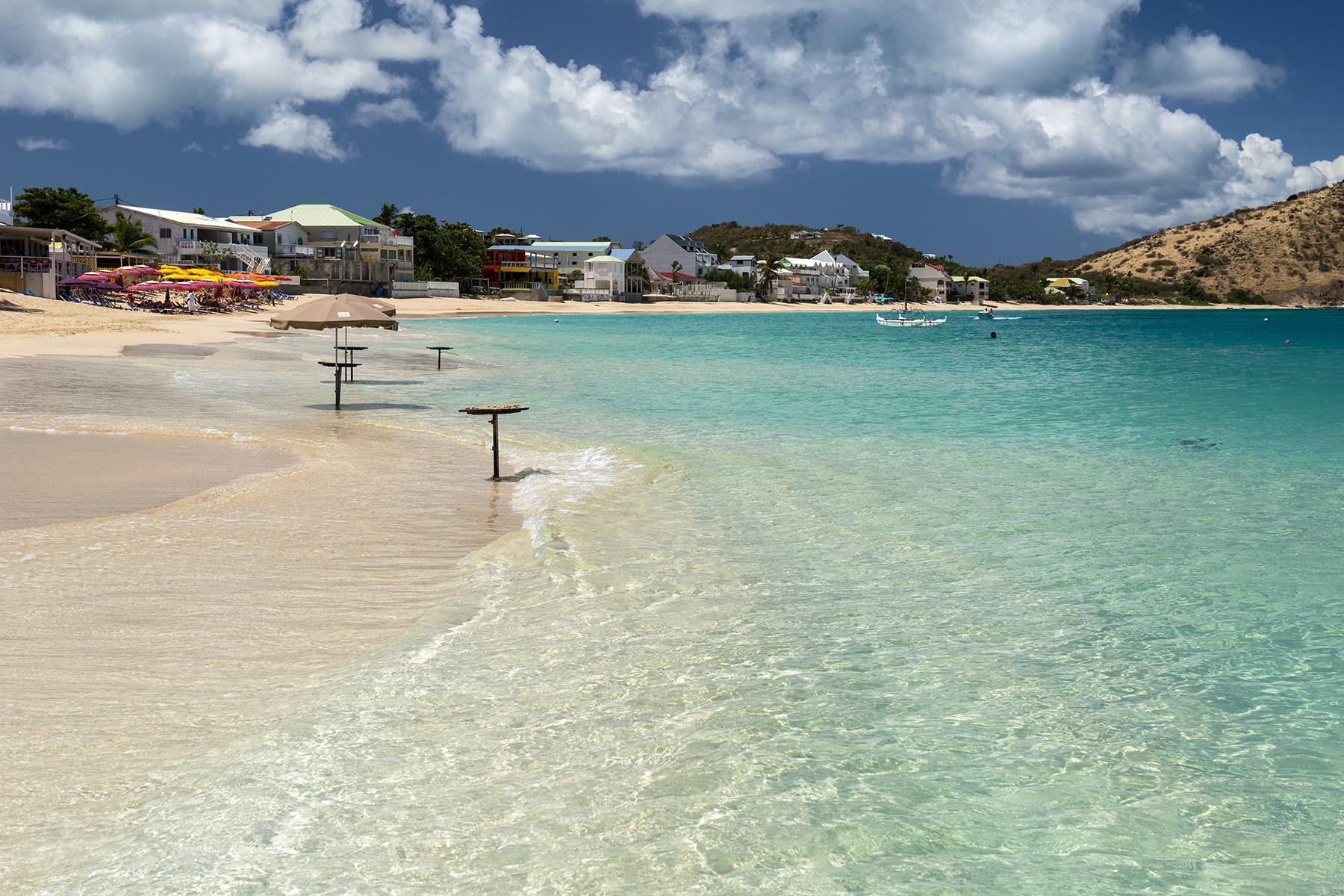St. Martin and St. Maarten
St. Martin and St. Maarten
St. Maarten/St. Martin is virtually unique among Caribbean destinations. The 37-square-mile (96-square-km) island is a seamless place (there are no border gates), but it is governed by two nations—the Netherlands and France—and has residents from 70-some different countries. A call from the Dutch side to the French is an international call, currencies are different, and even the vibe is different. In the Caribbean, only the island of Hispaniola is remotely in a similar position, ecompassing two distinct countries: Haiti and the Dominican Republic.
Happily for Americans, who make up the majority of visitors to St. Maarten/St. Martin, English works in both nations. Dutch St. Maarten might feel particularly comfortable for Americans: the prices are lower (not to mention in U.S. dolla...
Read MoreSt. Maarten/St. Martin is virtually unique among Caribbean destinations. The 37-square-mile (96-square-km) island is a seamless place (there are no border gates), but it is governed by two nations—the Netherlands and France—and has residents from 70-some different countries. A call from the Dutch side to the French is an international call, currencies are different, and even the vibe is different. In the Caribbean, only the island of Hispaniola is remotely in a similar position, ecompassing two distinct countries: Haiti and the Dominican Republic.
Happily for Americans, who make up the majority of visitors to St. Maarten/St. Martin, English works in both nations. Dutch St. Maarten might feel particularly comfortable for Americans: the prices are lower (not to mention in U.S. dollars), the big hotels have casinos, and there is more nightlife. Huge cruise ships disgorge masses of shoppers into the Philipsburg shopping area at midmorning, when roads can quickly become overly congested. But once you pass the meandering, unmarked border into the French side, you will find a bit of the ambience of the south of France: quiet countryside, fine cuisine, and in Marigot, a walkable harbor area with outdoor cafés, outdoor markets, and plenty of shopping and cultural activities.
Almost 4,000 years ago, it was salt and not tourism that drove the little island's economy. Arawak Indians, the island's first known inhabitants, prospered until the warring Caribs invaded, adding the peaceful Arawaks to their list of conquests. Columbus spotted the isle on November 11, 1493, and named it after St. Martin (whose feast day is November 11), but it wasn't populated by Europeans until the 17th century, when it was claimed by the Dutch, French, and Spanish. The Dutch and French finally joined forces to claim the island in 1644, and the Treaty of Concordia partitioned the territory in 1648. According to legend, the border was drawn along the line where a French man and a Dutch man, running from opposite coasts, met.
Both sides of the island offer a touch of European culture along with a lot of laid-back Caribbean ambience. Water sports abound—diving, snorkeling, sailing, windsurfing, and in early March, the Heineken Regatta. With soft trade winds cooling the subtropical climate, it's easy to while away the day relaxing on one of the 37 beaches, strolling Philipsburg's boardwalk, and perusing the shops on Philipsburg's Front Street or the rues (streets) of the very French town of Marigot. Although luck is an important commodity at St. Maarten's 13 casinos, chance plays no part in finding a good meal at the excellent eateries or after-dark fun in the subtle to sizzling nightlife. Heavy development—especially on the Dutch side—has stressed the island’s infrastructure, but slowly some of the more dilapidated roads are showing signs of improvement. A series of large roundabouts, with the beginnings of some decent signposting, and attractive monumental sculptures, has improved traffic flow (remember, the cars already in the roundabout have right-of-way). At long last, the eyesore of hurricane-wrecked buildings that line the golf course at Mullet Bay has been demolished, and most welcome is the new swing bridge that crosses Simpson Bay Lagoon, connecting the airport and Cole Bay.
When cruise ships are in port (and there can be as many as seven at once), shopping areas are crowded and traffic moves at a snail's pace. We suggest spending these days on the beach or the water, and planning shopping excursions for the early morning or at cocktail hour, after "rush hour" traffic calms down. Still, these are minor inconveniences compared with the feel of the sand between your toes or the breeze through your hair, gourmet food sating your appetite, and having the ability to crisscross between two nations on one island.








